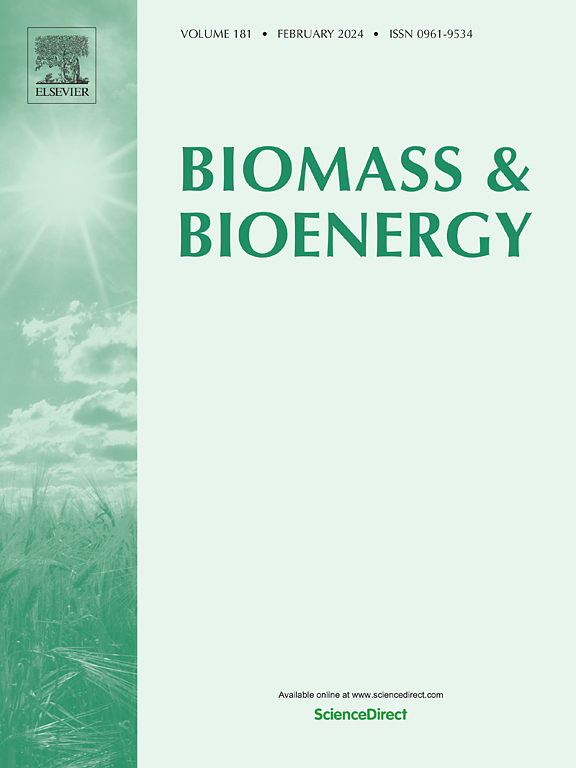热解椰子纤维中的压阻系数
IF 5.8
2区 生物学
Q1 AGRICULTURAL ENGINEERING
引用次数: 0
摘要
热解碳材料为当前研究领域的许多问题提供了令人着迷的解决方案。当地可获得的有机废物可以进行热解,并调整其特性以用于各种应用。椰子壳和椰子纤维等椰子基材料在不同的技术应用中都取得了可喜的成果。然而,有关这些材料的结构和性能演变的详细研究尚未开展。本研究对椰子纤维衍生碳的电导率和压阻系数的演变进行了研究。椰子纤维在 600 °C (CCP600)、800 °C (CCP800) 和 1000 °C (CCP1000) 的不同温度下热解生成碳纤维。电导率实验显示 CCP600、CCP800 和 CCP1000 之间存在差异,CCP600 的电导率约为(0.7 S/m),远低于 CCP800(1 × 103 S/m)和 CCP1000(1.4 × 103 S/m)。相反,CCP600 显示出令人印象深刻的压阻特性,即使在极小的应变下也能表现出显著的电阻变化。椰子纤维衍生碳的量规系数分别为:CCP600 4.1、CCP800 1.0 和 CCP1000 0.3。此外,粉末碳样品的量规因数提高到了 36.8,这使得 CCP600 非常适合需要精确传感能力的传感器应用。本研究表明,CCP600 成本低廉,易于制造,是一种很有前途的低成本传感器应用材料。本文章由计算机程序翻译,如有差异,请以英文原文为准。
Piezoresistivity in pyrolyzed coconut fiber
Pyrolyzed carbon materials give fascinating solutions for many problems in the current research world. The locally available organic wastes can be pyrolyzed and tuned for their properties for various applications. Coconut-based materials such as shell and fiber have shown promising results in different technological applications. However, a detailed study of the structural and property evolution of these materials has not been carried out yet. In this work, the evolution of conductivity and piezoresistivity of coconut fiber-derived carbon is studied. Coconut fiber is pyrolyzed at different temperatures 600 °C, (CCP600) 800 °C (CCP800) and 1000 °C (CCP1000) to produce carbon fiber. Electrical conductivity experiments show differences between CCP600, CCP800 and CCP1000, with CCP600 displaying much lower conductivity at approximately (0.7 S/m) compared to CCP800 (1 × 103 S/m) and CCP1000 (1.4 × 103 S/m). Conversely, CCP600 demonstrates impressive piezoresistive characteristics, exhibiting significant resistance changes even under minimal strain. The gauge factor for the coconut fiber-derived carbon was found to be 4.1 for CCP600, 1.0 for CCP800, and 0.3 for CCP1000. Further, the powdered carbon samples show an increase in the gauge factor to a range of 36.8, which makes CCP600 well-suited for sensor applications requiring precise sensing capabilities. The present study suggests that CCP600, with its low cost and ease of fabrication, is a promising material for low-budget sensor applications.
求助全文
通过发布文献求助,成功后即可免费获取论文全文。
去求助
来源期刊

Biomass & Bioenergy
工程技术-能源与燃料
CiteScore
11.50
自引率
3.30%
发文量
258
审稿时长
60 days
期刊介绍:
Biomass & Bioenergy is an international journal publishing original research papers and short communications, review articles and case studies on biological resources, chemical and biological processes, and biomass products for new renewable sources of energy and materials.
The scope of the journal extends to the environmental, management and economic aspects of biomass and bioenergy.
Key areas covered by the journal:
• Biomass: sources, energy crop production processes, genetic improvements, composition. Please note that research on these biomass subjects must be linked directly to bioenergy generation.
• Biological Residues: residues/rests from agricultural production, forestry and plantations (palm, sugar etc), processing industries, and municipal sources (MSW). Papers on the use of biomass residues through innovative processes/technological novelty and/or consideration of feedstock/system sustainability (or unsustainability) are welcomed. However waste treatment processes and pollution control or mitigation which are only tangentially related to bioenergy are not in the scope of the journal, as they are more suited to publications in the environmental arena. Papers that describe conventional waste streams (ie well described in existing literature) that do not empirically address ''new'' added value from the process are not suitable for submission to the journal.
• Bioenergy Processes: fermentations, thermochemical conversions, liquid and gaseous fuels, and petrochemical substitutes
• Bioenergy Utilization: direct combustion, gasification, electricity production, chemical processes, and by-product remediation
• Biomass and the Environment: carbon cycle, the net energy efficiency of bioenergy systems, assessment of sustainability, and biodiversity issues.
 求助内容:
求助内容: 应助结果提醒方式:
应助结果提醒方式:


